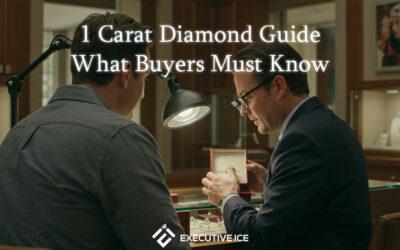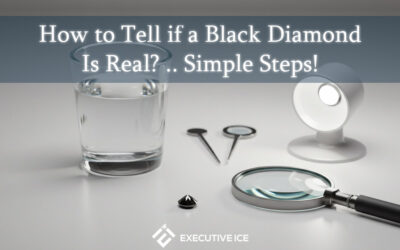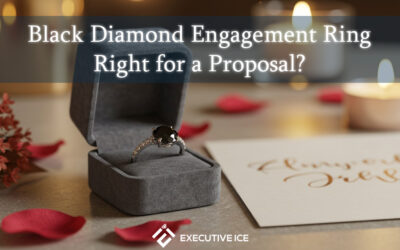For diamond shoppers, self-protection is key, and this comes through purchasing diamonds assessed and graded by reputable laboratories. The Gemological Institute of America (GIA) emerges as the leading authority in this context, setting the gold standard for diamond certifications.
Why you should educate yourself about diamond grading?
The diamond trade, unfortunately, is riddled with dubious practices. Fake certificates, blood diamonds, and untrustworthy labs cast a shadow over the industry. Therefore, it’s essential to acquaint yourself with the most reliable places to purchase certified diamonds. This knowledge not only guarantees value for money but also allows you to contribute to the cessation of the conflict diamond industry.
Diamonds Before GIA
Prior to the 1930s, the world of diamonds was a murky one, with both consumers and traders operating with a lack of knowledge. Consumers often found themselves purchasing flawed diamonds at inflated prices, while traders might unwittingly sell high-value diamonds at lower rates.
Enter Robert M. Shipley, a jewelry trader intent on instigating industry-wide standardization. He envisioned a profession akin to those of physicians, architects, and engineers, where gemologists would undergo rigorous studies and examinations to serve the public better:
Like the physician, the architect and the engineer, the gemologist must complete prescribed studies and examinations in order to be of exceptional service to the public in the new profession of Gemology
During this period, the lack of a uniform grading system further muddled the diamond industry. Each jeweler applied their unique grading system, leading to a state of confusion and inconsistency for businesses and consumers alike.
The glaring need for structured knowledge and a universal solution prompted the search for a transformative answer to these challenges.
Then, GIA Came to Life
The man behind the inception of the Gemological Institute of America (GIA) was Robert M. Shipley, a jeweler who envisioned a regulated, standardized diamond industry.
Established in 1931, GIA, headquartered in Carlsbad, California, has emerged as a non-profit organization that conducts research, provides education related to gemstones, and grades and certifies diamonds that meet their rigorous standards.
Employing experts who maintain a high level of meticulousness in their work, GIA has become a trusted global authority for diamond certification. Beyond consumer protection, it has fostered the growth of thousands of careers within the gem industry.
With a presence in eight countries and a staff of over 3500 worldwide, GIA offers a variety of courses through its online academy for individuals aspiring to become gemology experts. They also provide official diplomas and intensive programs for those who wish to delve deeper into the field, all accessible through the education section of their website.
GIA & Revolutionizing the Diamond Industry
The impact of GIA on the diamond industry has been profound. The institute was instrumental in establishing the key elements found in any diamond grading report today, specifically the creation of the 4Cs grading system – Cut, Clarity, Color, and Carat.
These four measures now form the essential benchmarks for assessing the quality and value of a diamond, enabling consumers to make informed choices.
Carat weight may seem like a simple metric, but it revolutionized the industry. Before the carat system, diamonds were sold based on size, which can be misleading since a diamond of low cut grade can appear larger than it is, making it less valuable despite its size.
Clarity is another essential factor, influenced by the presence of blemishes/inclusions that could mar the diamond’s beauty.
Color, determined by the degree of yellowness or whiteness in a diamond, also plays a significant role. White diamonds command higher prices compared to those with a yellow tint.
The cut, however, is the most crucial element of a diamond’s value. It affects symmetry, which in turn influences the brilliance, fire, and reflected light of the diamond.
More elaborate cuts are pricier, but it’s crucial to remember that even a flawless, D color diamond can appear dull if the cut is incorrect. The cut enhances or diminishes a diamond’s true potential.
Diamond Grading Before & After GIA
Imagine stepping into a market where apples and bananas are compared side by side – bewildering, isn’t it?
This was the world of diamond shopping before the Gemological Institute of America (GIA) stepped in.
Before GIA, diamond comparison was far from straightforward. Buyers sought to get the best value for their money but without a standardized certification process, the advice from one jeweler would often conflict with the next.
One might admire the virtues of a diamond’s flawless surface, while another would notice inclusions. This uncertainty would often force buyers to rely on the most persuasive jeweler. If the jeweler was unscrupulous, the buyer would inevitably get tricked.
However, GIA’s introduction of standard diamond grading transformed this murky market.
By assessing diamonds based on universally recognized parameters – the famous 4Cs (Cut, Clarity, Color, and Carat) – GIA provided a clear, objective framework for everyone, buyers and jewelers alike. Comparing diamonds suddenly made much more sense when each characteristic received a standardized grade.
How GIA Played a Role in Decreasing Stolen Diamonds Business?
GIA’s influence extends beyond providing clarity in diamond grading – it also plays a significant role in countering the stolen diamond market. How does this work? GIA uses laser technology to inscribe diamonds, a feature that can come in handy when identifying stolen diamonds.
In most cases, a stolen diamond doesn’t come with its certificate. When thieves attempt to sell a diamond, a certificate is crucial for determining its value.
They are faced with two options:
- Selling the diamond at a significantly lower price on the black market
- Sending it for grading.
In the rare case that they choose the second option, grading labs like GIA or AGS can instantly identify the diamond. However, the harsh reality is that the majority of stolen diamonds end up in the black market, often sold for a fraction of their worth.
This illegal market could be eradicated if everyone stopped buying diamonds without certificates. Although the black market remains operational today, GIA continues its mission to uphold the integrity of the diamond industry, ensuring buyers make informed decisions and get what they pay for.
GIA and Stopping Conflict Diamonds
Conflict diamonds, also known as blood diamonds, originate from areas plagued by illegal mining activities, where the production process involves immense human suffering. Moreover, the proceeds from these diamonds often fuel and exacerbate wars in Africa.
These diamonds are associated with factions and governments that lack international recognition. In response, the Kimberley Process was established to suppress the conflict diamond trade, and its inception has led to a significant reduction in this illicit business.
GIA staunchly supports this initiative and refuses to certify diamonds that haven’t undergone the Kimberley Process. By doing so, it encourages consumers to purchase legitimate diamonds that haven’t financed wars or exploited miners.
GIA Quality Assurance
Beyond its stand against stolen and conflict diamonds, GIA offers unmatched assurance of diamond quality. As a trusted organization that’s been grading millions of diamonds and educating gemologists for nearly a century, GIA’s certification is synonymous with quality.
As a non-profit organization, GIA’s operations aren’t driven by profit margins, which means its primary concern is maintaining high standards in diamond grading.
Therefore, choosing a GIA-certified diamond means you’re investing in quality and not falling for exaggerated claims made by profit-driven sellers, that’s why it’s essential to know how to buy diamonds online like a pro.
Moreover, GIA protects buyers from inadvertently purchasing synthetic jewels.
The peace of mind that comes with knowing the true value and authenticity of your diamond is priceless, especially when it’s a significant investment like an engagement ring.
Job Creation
GIA also plays an essential role in job creation. It employs numerous professionals to conduct training, research, and diamond grading. Every time you utilize GIA’s services, you’re indirectly helping someone retain their job.
Furthermore, GIA has paved the way for individuals to join the diamond trade and make a living. By supporting GIA, you’re not only endorsing ethical diamond practices but also contributing to global economic growth.
Summary
In a nutshell, GIA is the world’s premier diamond certification lab. A GIA-graded diamond guarantees that you’re purchasing exactly what’s listed on the certificate.
Never hesitate to ask a jeweler for this certification, and even better, consider buying your diamond online from reputable stores like James Allen, Blue Nile, or Whiteflash.
These trusted platforms prioritize transparency and uphold the GIA’s stringent standards, ensuring you invest in a diamond that’s worth every penny.




